This Christmas participate in a special prayer mass at The Bandel Basilica of Holy Rosary
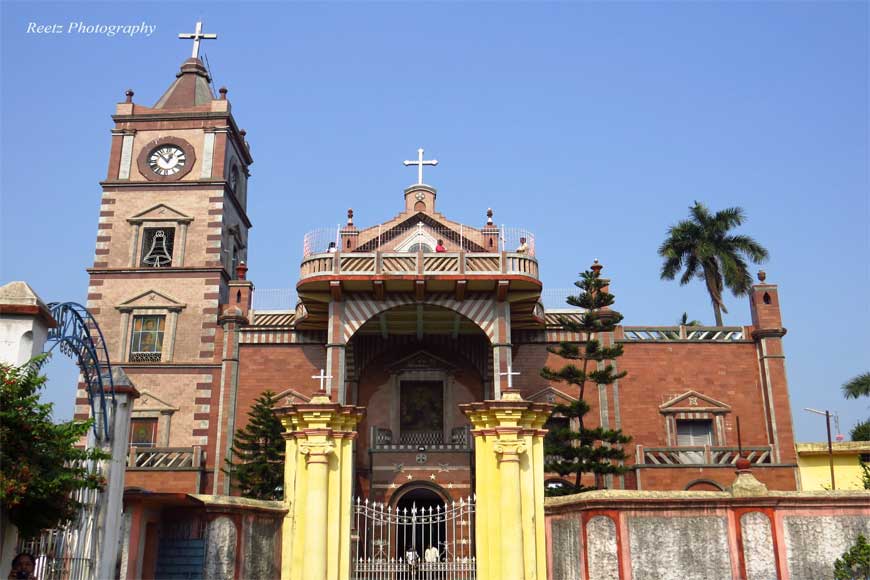
The Basilica of Holy Rosary, commonly known as Bandel Church, is one of the most revered Roman Catholic churches of our country. It was established by a Portuguese Captain named Pedro Tavares in the year of 1599, right at the dawn of European settlement in Bengal. Bandel is a small town on the banks of Hooghly River, around 60 kilometers from state capital. It owes its name to a Bengali word ‘Bondor” (meaning ‘harbour’) which eventually became ‘Bandel’. Once the port city of the Portuguese merchants who had settled couple of kilometers away from Bandel, this thriving town of Bengal is still known for its rich past. We had been recently there on a winter morning. What a blissful place it is!
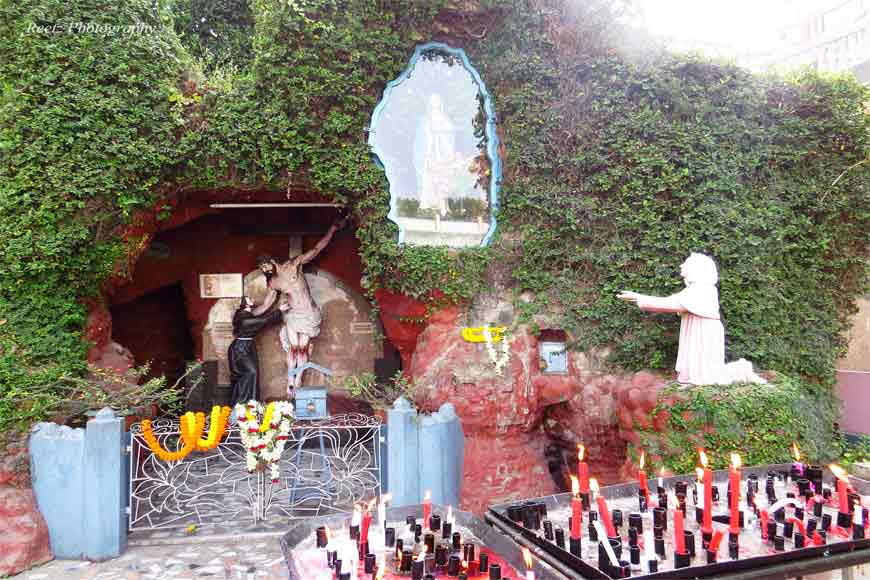 Altar
Altar
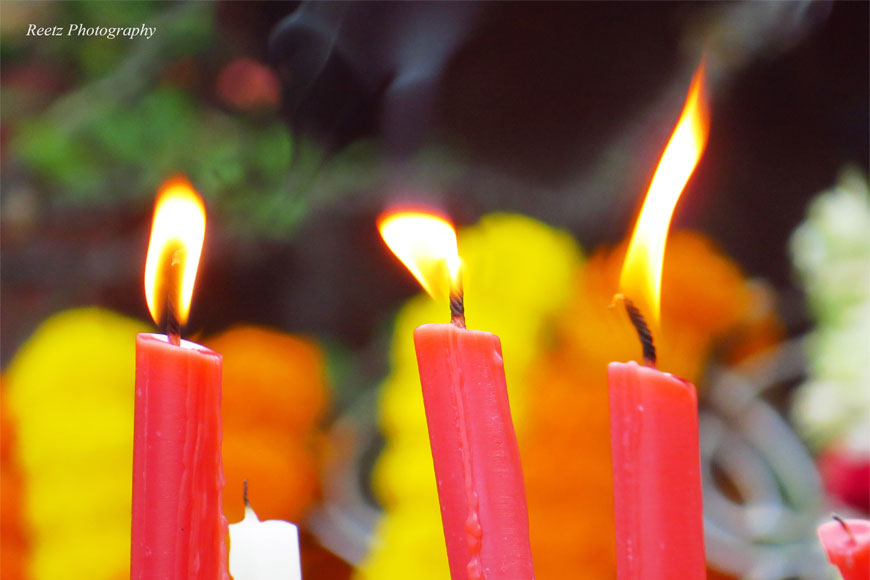 Candles at altar
Candles at altar
The Basilica welcomed us with a grand iron gate; gently pushing it we walked inside to enthrall the ancient Portuguese site of reverence. Believe me, centuries later even today the surroundings still bear the royal Iberian touch. With the Ganges on our right, the brightly painted building beckoned us inside. While we walk in, let us look back at the thrilling past of this holy altar.
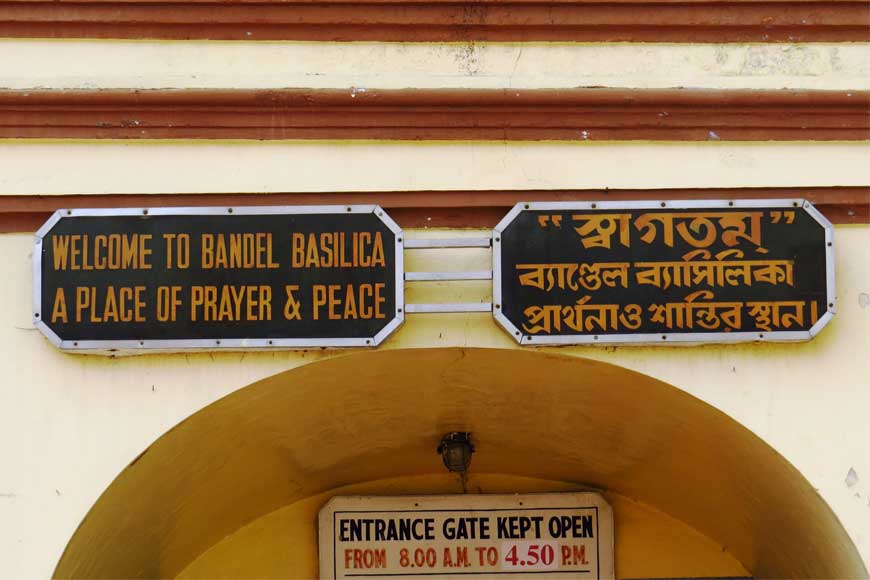 Church plaque
Church plaque
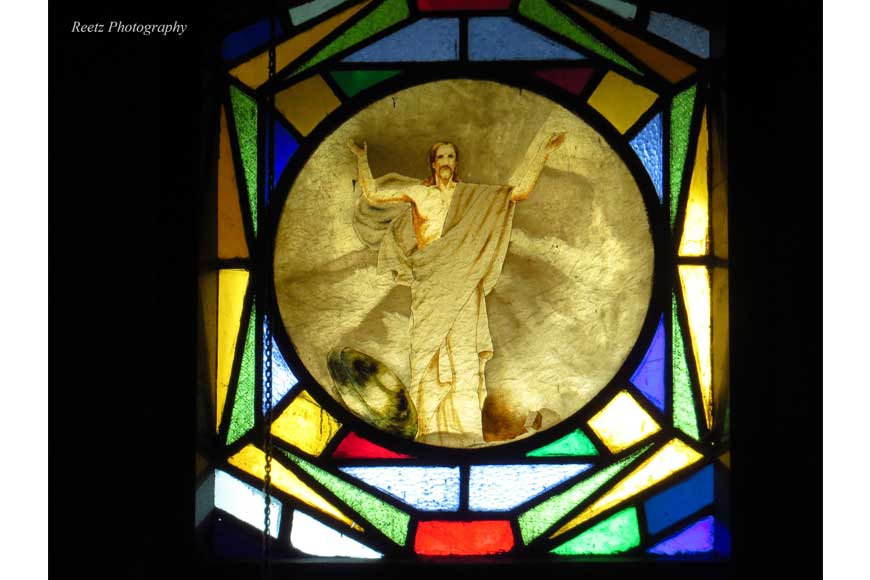 Coloured glass
Coloured glass
Way back in 1579, Gour Nawab Muhammad Khan had permitted the white men to establish their trade and commercial centre at Bandel, eventually permitting them to spread Christianity amongst the natives. It was twenty years later, that this Basilica of Holy Rosary was constructed by Captain Tavares. The church was built at the main entrance of the Portuguese Fort as protector of their realm.
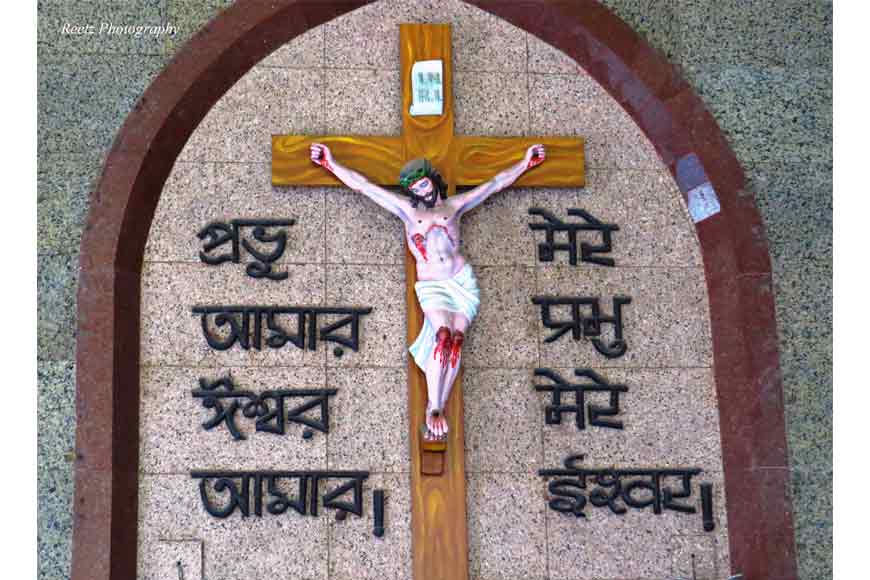 Inside church
Inside church
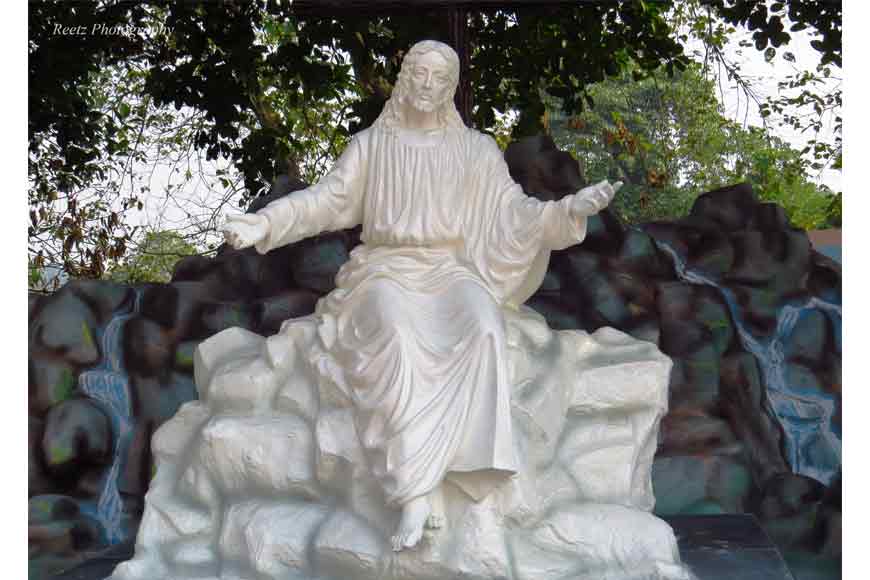 Jesus welcomes with open hands
Jesus welcomes with open hands
But with the rising tensions between these foreign traders and Mughal emperors, several attacks ensued which finally led to the fall of Portuguese in 1632. Their forts, trade establishments, port, vessels, arsenals, religious edifices, common people, army… everything was ransacked brutally, bring all to debris. The poor survivors were deported to Agra, the Mughal Capital, as war prisoners. Surprisingly, the only fortification to survive the Mughal attack was this Basilica of Holy Rosary. After a series of divine incidents, the Portuguese were finally sent back to Bandel in 1640 to continue with their business. It was then the church was renovated from the ruins to its present shape by Fr. Da Cruz, an aged priest.
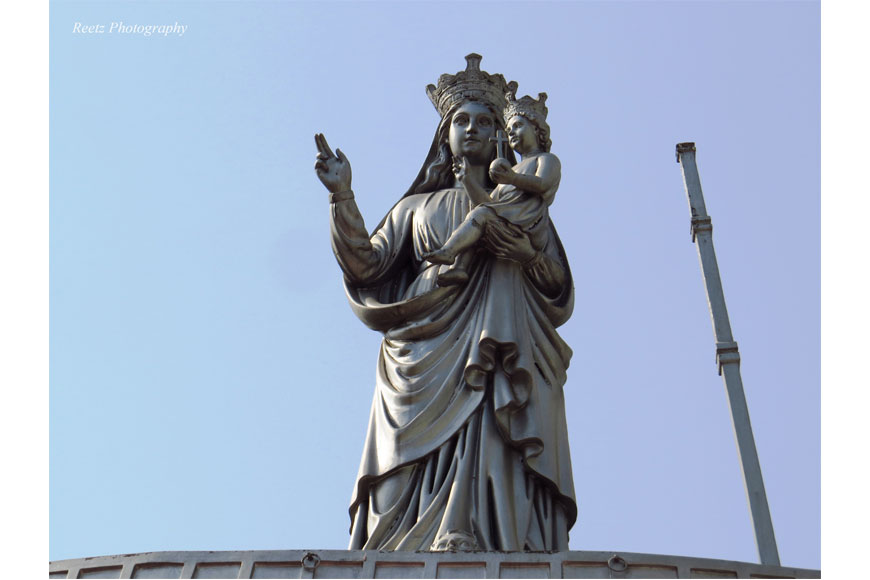 Lady of voyage
Lady of voyage
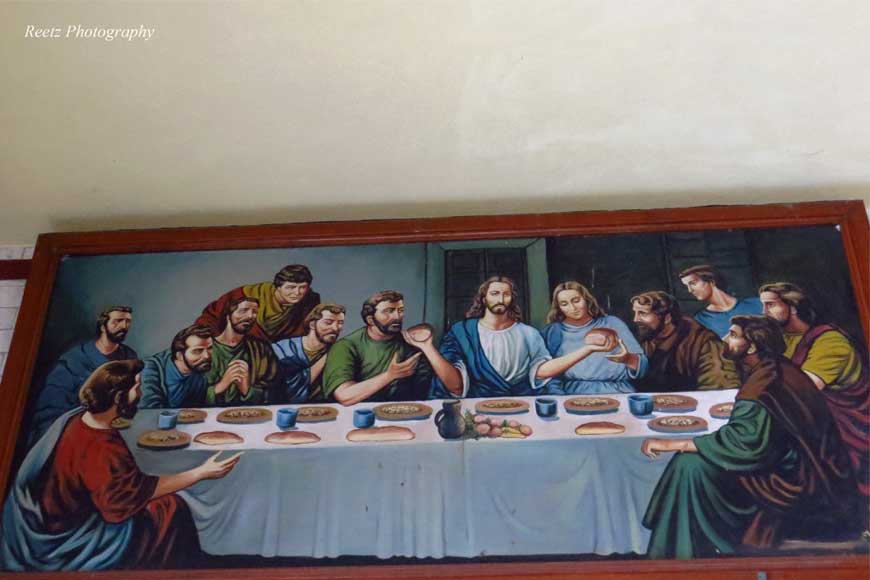 Oil painting of the last supper
Oil painting of the last supper
Right at the footstep of the statue of Our Lady of Happy Voyage, there lies a gigantic wooden mast (20 feet length) covered in a glass box. It is said that during the reconstruction phase of the church, a Portuguese ship loaded with enormous wealth, had shockingly survived a fatal sea storm while marching towards Bandel. The captain owed his survival to Our Lady of Happy Voyage stationed at the Basilica of Holy Rosary. He thus sacrificed the largest mast of his ship to the deity as a token of his gratitude. Since then, the flagpole is kept at the entrance of the tombstone, under the statue of Our Lady of Happy Voyage.
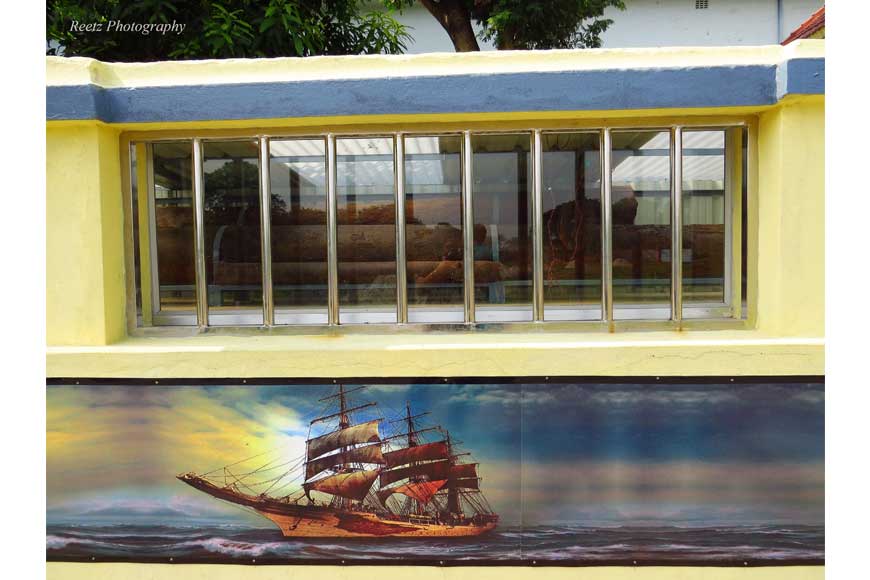 The mast
The mast
Photography is strictly prohibited inside the prayer hall, but the visuals of such a serene corner will tempt anybody to lock a glance in his camera. The corridor is decorated with colourful skylights, stunning oil paintings and sculptures. We climbed up to the terrace where the altar and tombstones are placed. Innumerable candles stand as testimony to the church’s solidarity.
How to reach
• The best way to reach Basilica of Holy Rosary is to take a local train from Howrah station (main line) and get down at Bandel.
• You need to take the riverside exit of the station and hire any auto, toto or hand-pulled rickshaws which will drop you right at the church entrance.
• By car, it took us almost 2.5 hours via Grand Trunk Road due to ongoing bridge repairing works near Bally Khal.
When to go
Every Sunday, gates are opened to the public for special prayers. Other days it is open from 8.30am until 4.50pm. On the first weekend of May, holy feasts are arranged by the church authorities which witnesses massive footfalls of devotees across borders. Colourful Christmas celebrations are also observed during the last week of December.









